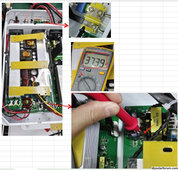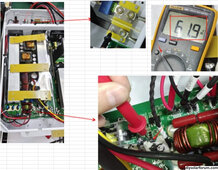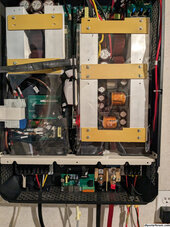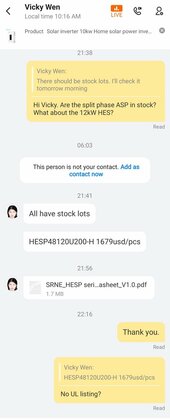Not "cycling on and off", simply drawing high AC current. But the ripple current in capacitor is more likely higher frequency switching, which it filters.
Single phase inverter has rectified 60 Hz drawn from capacitor and battery. Except capacitors can't supply anywhere near the energy needed without voltage swinging much more than battery allows. I measured significant ripple in battery current.
An HF inverter would probably draw ripple current to create 60 Hz. I measured PV input of GT PV inverter, saw about 3.5V ripple on 350V. PV current is relatively constant (sawtooth with MPPT switching), while current drawn by inverter is rectified sine wave.








